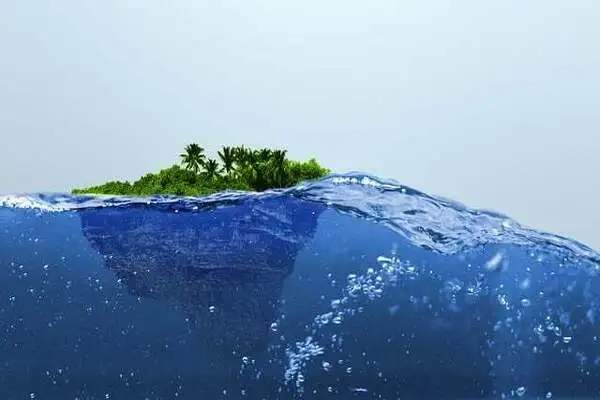Water treatment is the process of improving water quality for human consumption and use. Natural water is rarely of satisfactory quality for human consumption and therefore always requires treatment.
The level and method of treatment depend on the following:
- Nature of source
- Quality of the source
- The purpose for which it should be supplied
Recommended Articles
- Everything You Need To Know About Water Quality
- Water Pollution and Control: Everything You Need To Know
- The Communication Skills: All Engineers Need To Know
- The Most Asked Civil Engineering Interview Questions
- The Complete list of BSs in Civil Engineering Subjects
- FRP: What You Need To Know About Fibre-Reinforced Plastic?
- Unit Operations for Wastewater Treatment: The Complete Guide
Table of Contents
Selection of The Source

The following are the criteria for selecting a water source:
Quality of Water from the Source
The quantity of water must suffice the present and future demand. If one source is insufficient, the possibility of including two or more sources to meet the demand jointly should be explored.
Studies should be conducted to determine whether a combination of sources can provide a more economical and reliable water supply than a system based on a single source.
Mixing of water from two or more sources may be used to reduce the concentrations to acceptable levels, e.g fluorides.
Quality of Water From The Source
The water quality should be such that, after appropriate treatment, it meets the specified standards. Sources that require no water treatment should be chosen initially, provided that the necessary quantity of water is available.
Protection
Protection of the source against pollutants, both present and future, should be considered.
Feasibility Study
The source should be accessible and exploitable using appropriate technology at reasonable costs.
The Objective of Water Treatment
Water treatment works in the public water supply system must be selected and designed to deliver water that is;
- Hygienically safe
- Aesthetically attractive and palatable
- Economically satisfactory for the uses
Location for the Water Treatment Plant
- The treatment plant should be located near the town to which the water is to be supplied so that the treated water does not need to travel a considerable distance after treatment.
- The treatment plant should be situated away from any potential sources of pollution.
- The plant should be easily accessible for the persons connected with the operation and maintenance.
- If natural topography permits, the treatment plant should be located at a higher elevation, and the water supply may be achieved by gravity.
Methods of Water Treatment
Various water treatment methods and the nature of impurities removed by employing them are as follows:
- Track rack: A unit operation provided at the intake gate for the removal of floating debris and ice.
- Micro strainer: A unit operation for the removal of algae and planktons from the raw water.
- Aeration: A unit process which strips and oxidises taste and odour-causing volatile organics and gases, and iron and manganese. Aeration systems include gravity aerators, mechanical aerators, and spray aerators, among others.
- Mixing: A unit operation which provides uniform and rapid distribution of chemicals and gases into the water.
- Coagulation: The addition and mixing of coagulants result in the destabilisation of colloidal particles and the formation of flocs.
- Flocculation: Aggregation of destabilised turbidity and colour, causing particles to form a rapid settling floc.
- Sedimentation: A gravity separation of suspended solids or flocs produced in the treatment process. It is used in pre-treatment works, such as plain sedimentation, and after flocculation and precipitation.
- Filtration: Removal of particulate matter by percolating through granular media. Filtration media may be single (such as sand or anthracite), mixed, or multilayered.
- Distillation: A multiple-effect evaporation and condensation. Distillations with vapour compression are the most common methods used for large-scale demineralisation systems.
Drawing and Design of Flow Diagram Treatment Works
The collection of various unit operations and processes is known as a process or flow diagram, process train, flow schematic, or flow scheme.
Unit operations are units of the flow diagrams which remove contaminants by physical forces. Unit processes are units within the flow diagrams that remove contaminants through chemical and biological reactions.
In water treatment schemes, unit processes and operations are combined into a process train to achieve a desired level of treatment, meeting the drinking water quality standards.
The choice of proper treatment processes and development of the process train requires an understanding of the processes, their performance, and operational capabilities.
Experiences acquired through treatment of the same or similar water sources provide an excellent guide in preparing the process train.
Considerations Which Influence the Selection of the Treatment Process train
- Ability to meet finished water quality objectives, considering both seasonal and long-term changes in the raw water quality.
- Overall system reliability.
- Flexibility and simplicity of operation
- The capability of the process to meet the hydraulic peaks
- Availability of skilled operation and maintenance personnel, major equipment, and chemical delivery system.
- The preference and experience of the design engineer.
- Ease of construction of facilities.
- Economics of construction and operation.
Conclusion On Water Treatment
As explained above, Water treatment is the process of improving water quality for human consumption and use.
Natural water is rarely of satisfactory quality for human consumption and therefore always requires treatment before it can be used.
Join the conversation by replying on Bluesky.
That’s all.
If you liked this article, please join Website For Engineers on Twitter, Facebook, TrueSocial, Pinterest, BlueSky, and in our WhatsApp channels.

